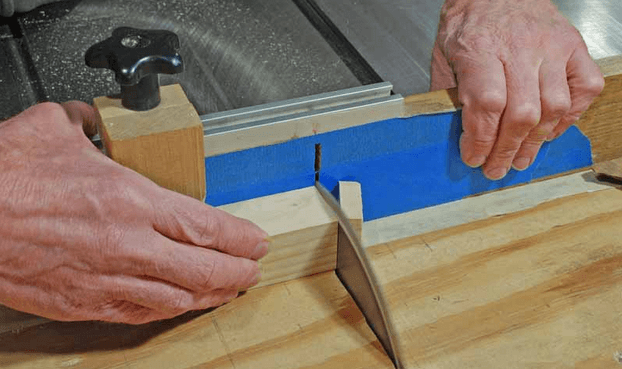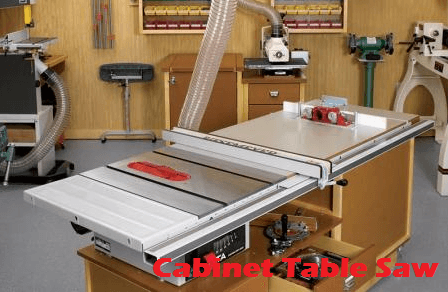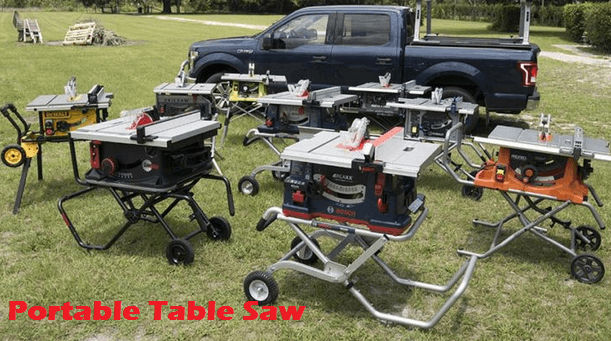As an Amazon Associate, I earn from qualifying purchases.

The table saw blade should be sharp and tightly fastened according to the tool’s instructions, and the teeth should point in the same direction that the blade spins. The blade’s height should be set so that the blade is sticking up no more than ¼ inch of above the wood.
It’s a good idea to use a push stick when you’re ripping (cutting with the grain) long pieces of wood on a table saw. If the piece you’re cutting extends beyond the surface of the table saw, make certain that it is supported somehow; sawhorses or scrap furniture will work well.
Whether or not you use a push stick, never put your hands closer to the blade than 4 inches when the machine is on.
Most table saws come equipped with a blade guard that prevents the user from making contact with the blade (it’s been removed in these photographs for the sake of clarity). Nonetheless, it’s a good idea to follow these precautions even when a guard is in place.
Some experts recommend that if you are cutting a narrow strip of wood, the table saw should be set so that the width of the wood that will pass between the blade and the fence is greater than the width of the wood that will pass on the opposite side of the blade. Never run twisted, bowed, or rough wood through a table saw. Such wood can easily buck or kick back at you.
To use a table saw, set the wood in place before the block, keeping the edge pressed firmly against the fence. Don’t let the blade touch the wood. Posit ion yourself slightly to one side of the blade: you want to avoid being directly in line with it as you cut so that if the wood kicks back (or if any foreign matter in the wood is thrown out when it hits the blade) you are not directly in the line of fire.
Turn the machine on, and when the blade is spinning at full speed. Push the wood into it, keeping the edge of the wood pressed against the fence. When the wood is clear of the blade, turn off the machine. You should never pull the wood back through the machine, especially when it’s turned on.
Table saws also feature a miter gauge—an adjustable backstop that allows you to cut wood at an angle. Although the protects in this blog don’t require the u of a miter gauge (and none is shown here) when you do cut wood with the assistance of a miter gauge, it is important that the wood maintains contact only with the gauge and the blade—it should never be in contact with the gauge, the blade, and the fence at the same time. If you cut when you have this three-point contact, there is a good chance the wood will kick back at you. So be careful.


Leave a Reply